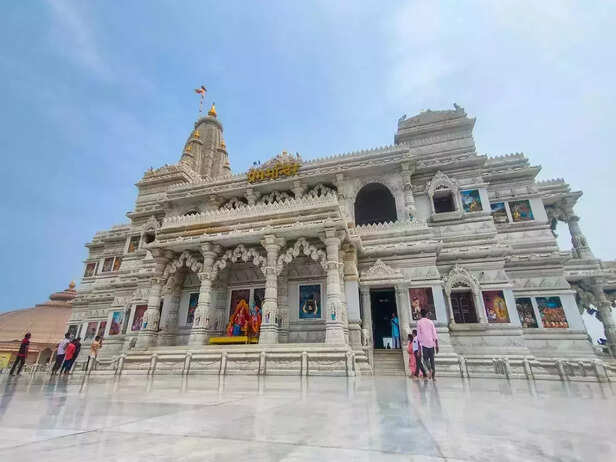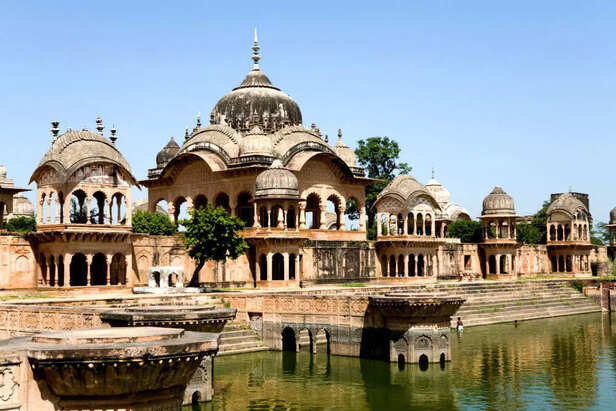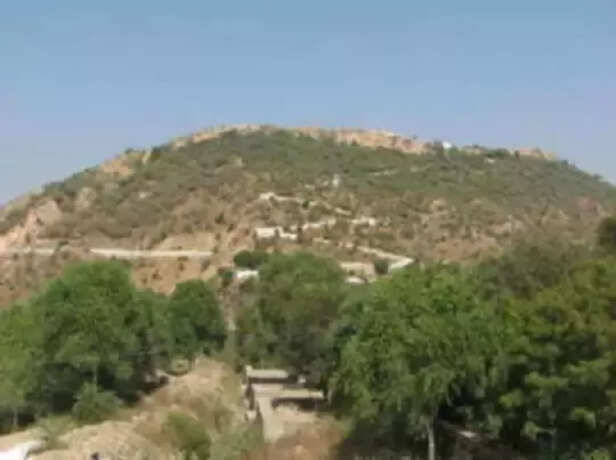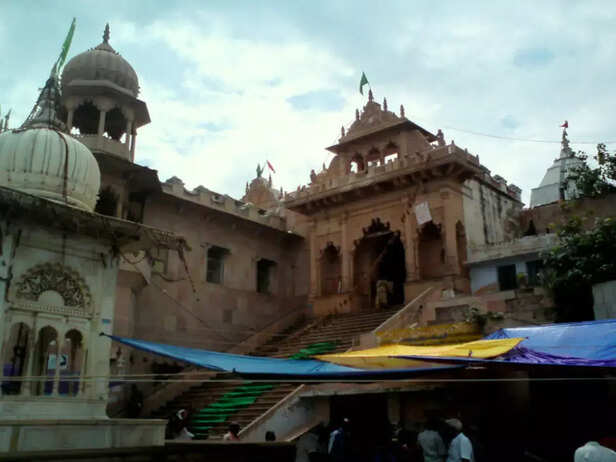5 Places Where Krishna’s Magic Is Still Believed to Work
Riya Kumari | May 16, 2025, 23:52 IST

( Image credit : Times Life Bureau )
From love spells to cosmic mischief, Krishna’s mojo has survived centuries—and somehow, it’s still making people believe in miracles, cosmic love, and the occasional “how did that just happen?” moment. So buckle up, because I’m taking you on a whirlwind tour of five places where Krishna’s magic is totally still a thing. Spoiler: it’s not just in dusty old books.
When we talk about Krishna, it’s tempting to think of him as a distant figure — a character from ancient texts, an icon of myth and legend. But what if his magic isn’t just about miracles of the past? What if it’s alive, not as a supernatural force alone, but as a source of wisdom and hope that quietly moves through time and space? Krishna’s story is not simply about divine power. It’s about love, courage, vulnerability, and the courage to be yourself in a world that often demands otherwise. His magic survives because it answers something deeply human — the longing for meaning, for connection, for a world that feels more whole.
1. Vrindavan

Vrindavan is the stage of Krishna’s youthful years, where his relationships with the gopis are not merely romantic tales but lessons on love beyond possession and expectation. In a world that often teaches love as control or transaction, Krishna’s love in Vrindavan is radical. It’s wild, free, and deeply personal. To visit Vrindavan is to be reminded that love can be a rebellion against fear — a choice to see and accept others fully, without conditions.
Here, Krishna’s magic calls us to ask: Are we loving freely, or are we holding back? Do we allow ourselves to be vulnerable, or do we hide behind walls? The answer shapes every relationship we have — with others and ourselves.
2. Dwarka

Dwarka, Krishna’s kingdom, represents a different kind of magic — the magic of leadership rooted in service and responsibility. Krishna’s reign was marked not by power over others but by power with others. He led not to dominate but to uplift, to create harmony in complexity. In today’s fractured world, Dwarka’s lesson is clear: True strength lies in humility and empathy, in knowing that leadership is not about control but about the courage to carry others forward.
Dwarka asks us: How do we lead our own lives? Do we act out of fear or out of a sense of responsibility to something larger than ourselves?
3. Mathura

Mathura is Krishna’s birthplace — where the divine entered the world in the form of a child. His childhood stories are often dismissed as mere folklore, but they hold a profound truth. The innocence of a child, the joy in simple things, the ability to find lightness even in hardship — these are forms of strength often lost in adulthood. Krishna’s butter stealing is cheeky, yes, but it’s also a reminder that life cannot be lived only through rules and seriousness.
Mathura invites us to reclaim the child inside us — to find play in the everyday, to trust joy, and to remember that sometimes, magic is simply choosing to see the world with wonder again.
4. Govardhan Hill

When Krishna lifted Govardhan Hill to shelter villagers from a storm, it was not just a divine display of power but a lesson in courage and care. Life’s storms — loss, fear, injustice — are real and inevitable. Krishna’s act teaches us that protection is not passive. It’s active, deliberate, and often requires great strength.
Govardhan challenges us: When the storm comes, do we shrink or do we rise? Do we protect only ourselves, or do we extend shelter to others? The hill is a symbol of resilience — a call to be both strong and compassionate.
5. Barsana

Barsana, Radha’s hometown, holds the heart of Krishna’s story — the love that is not about possession or completion, but about wholeness in the other’s freedom. Radha and Krishna’s relationship transcends the romantic clichés. It shows love as devotion, as longing that transforms and liberates rather than confines. It teaches that true love accepts absence as much as presence, silence as much as speech.
Barsana invites us to reflect: How do we love? Do we try to own or control, or do we allow love to grow in freedom?
Krishna’s Magic Is a Mirror
These places are more than destinations. They are mirrors reflecting the challenges and possibilities within ourselves. Krishna’s magic is not a secret formula or an escape from reality; it’s an invitation to live deeply and honestly, to meet life’s contradictions with grace and courage.
In a world often defined by division, fear, and superficiality, Krishna’s story — and the places where his magic is still felt — remind us that the most powerful magic is the human spirit’s capacity to love, to protect, to play, and to lead with humility. Maybe that’s why, after thousands of years, his magic still works. Because it’s not just about Krishna. It’s about all of us. And if you carry even a small part of that magic forward, you’re already part of something much bigger than yourself.
1. Vrindavan

Vrindavan
( Image credit : Times Life Bureau )
Vrindavan is the stage of Krishna’s youthful years, where his relationships with the gopis are not merely romantic tales but lessons on love beyond possession and expectation. In a world that often teaches love as control or transaction, Krishna’s love in Vrindavan is radical. It’s wild, free, and deeply personal. To visit Vrindavan is to be reminded that love can be a rebellion against fear — a choice to see and accept others fully, without conditions.
Here, Krishna’s magic calls us to ask: Are we loving freely, or are we holding back? Do we allow ourselves to be vulnerable, or do we hide behind walls? The answer shapes every relationship we have — with others and ourselves.
2. Dwarka

Dwarka
( Image credit : Times Life Bureau )
Dwarka, Krishna’s kingdom, represents a different kind of magic — the magic of leadership rooted in service and responsibility. Krishna’s reign was marked not by power over others but by power with others. He led not to dominate but to uplift, to create harmony in complexity. In today’s fractured world, Dwarka’s lesson is clear: True strength lies in humility and empathy, in knowing that leadership is not about control but about the courage to carry others forward.
Dwarka asks us: How do we lead our own lives? Do we act out of fear or out of a sense of responsibility to something larger than ourselves?
3. Mathura

Mathura
( Image credit : Times Life Bureau )
Mathura is Krishna’s birthplace — where the divine entered the world in the form of a child. His childhood stories are often dismissed as mere folklore, but they hold a profound truth. The innocence of a child, the joy in simple things, the ability to find lightness even in hardship — these are forms of strength often lost in adulthood. Krishna’s butter stealing is cheeky, yes, but it’s also a reminder that life cannot be lived only through rules and seriousness.
Mathura invites us to reclaim the child inside us — to find play in the everyday, to trust joy, and to remember that sometimes, magic is simply choosing to see the world with wonder again.
4. Govardhan Hill

Govardhan hills
( Image credit : Times Life Bureau )
When Krishna lifted Govardhan Hill to shelter villagers from a storm, it was not just a divine display of power but a lesson in courage and care. Life’s storms — loss, fear, injustice — are real and inevitable. Krishna’s act teaches us that protection is not passive. It’s active, deliberate, and often requires great strength.
Govardhan challenges us: When the storm comes, do we shrink or do we rise? Do we protect only ourselves, or do we extend shelter to others? The hill is a symbol of resilience — a call to be both strong and compassionate.
5. Barsana

Barsana
( Image credit : Times Life Bureau )
Barsana, Radha’s hometown, holds the heart of Krishna’s story — the love that is not about possession or completion, but about wholeness in the other’s freedom. Radha and Krishna’s relationship transcends the romantic clichés. It shows love as devotion, as longing that transforms and liberates rather than confines. It teaches that true love accepts absence as much as presence, silence as much as speech.
Barsana invites us to reflect: How do we love? Do we try to own or control, or do we allow love to grow in freedom?
Krishna’s Magic Is a Mirror
In a world often defined by division, fear, and superficiality, Krishna’s story — and the places where his magic is still felt — remind us that the most powerful magic is the human spirit’s capacity to love, to protect, to play, and to lead with humility. Maybe that’s why, after thousands of years, his magic still works. Because it’s not just about Krishna. It’s about all of us. And if you carry even a small part of that magic forward, you’re already part of something much bigger than yourself.
